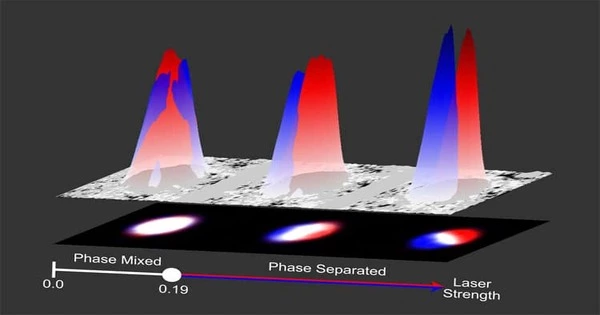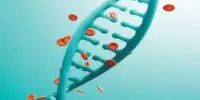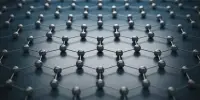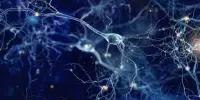Researchers used the coldest systems in the universe to realize in the laboratory gauge theories, key models of modern physics that describe the fundamental forces of nature and the behavior of complex quantum materials.
Gauge theories are mathematical models from theoretical physics that describe the interactions of elementary particles (such as electrons or quarks) and explain quantum mechanically three of nature’s fundamental forces: the electromagnetic, weak, and strong forces. Gravity, the fourth fundamental force, is described by Einstein’s theory of general relativity, which, while not yet understood in the quantum regime, is also a gauge theory.
Gauge theories, which are the workhorse of modern physics, can also be used to explain the exotic quantum behavior of electrons in certain materials or the error correction codes that future quantum computers will require to work reliably.
One possibility for better understanding these theories is to realize them using artificial and highly controllable quantum systems. This strategy is known as quantum simulation, and it is a subset of quantum computing. It was proposed for the first time in the 1980s by physicist Richard Feynman, more than fifteen years after he was awarded the Nobel Prize in Physics for his pioneering theoretical work on gauge theories.
The results we were getting did not seem to match any of the theories. The challenge was determining which regime you needed to be in order to see the correct effect coming from the correct location and eliminate the effect coming from the incorrect location.
Craig Chisholm
Quantum simulation can be seen as a quantum LEGO game where experimental physicists give reality to abstract theoretical models. They build them in the laboratory “quantum brick by quantum brick,” using very well controlled quantum systems such as ultracold atoms or ions. After assembling one quantum LEGO prototype for a specific model, the researchers can measure its properties very precisely in the lab, and use their results to understand better the theory that it mimics.
During the last decade, quantum simulation has been intensively exploited to investigate quantum materials. However, playing the quantum LEGO game with gauge theories is fundamentally more challenging. Until now, only the electromagnetic force could be investigated in this way.
An ultracold cloud that does not behave as its mirror image
The team used a cloud of atoms cooled to temperatures about a billionth of a degree above absolute zero to give reality to this topological gauge theory and simulate it in their experiment. They chose potassium as an atomic species because one of its isotopes has two states that interact with different strengths and can be used as quantum bricks to build the chiral BF gauge theory. They then used laser light to merge the two states into one new one.
This technique, known as “dressing the atoms with light,” caused them to acquire strange interactions, the strength and sign of which depended on the velocity of the cloud. Finally, they created an optical waveguide that would restrict the motion of the atoms to a line, and used additional lasers to kick the cloud and make it move at different velocities along it.
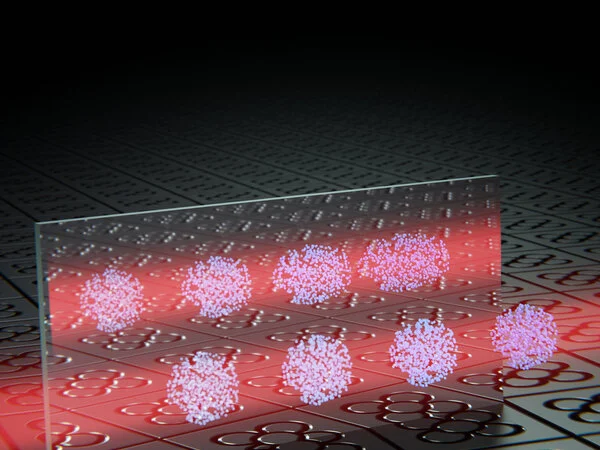
The team quickly realized that their findings were related to a theoretical paper published ten years prior that proposed using an almost identical setup to study a modified type of electromagnetism. However, the experiment’s outcomes never seemed to match their expectations. Craig Chisholm recalls that, at first, “The results we were getting did not seem to match any of the theories. The challenge was determining which regime you needed to be in in order to see the correct effect coming from the correct location and eliminate the effect coming from the incorrect location.”
The meaning of the modified electromagnetism mentioned in the paper was also a mystery to the experimental team. It cited mathematical physics papers from the 90s, which established the connection with the gauge theories used to described the fractional quantum Hall effect.
However, as Tarruell says, “for experimental atomic physicists like us, the content of these works was very hard to grasp, because they were written in a mathematical physics language that was completely different from ours. It was really frustrating to know that the answer to our questions was there, but we were not being able to understand it! This is when we decided that we needed to bring a theorist into the picture.”
A very fruitful experiment-theory collaboration
Reading the original gauge theory papers was simple for theoretical physicist Alessio Celi, who had previously worked on high energy physics and gravity before switching to quantum simulation. At the same time, he could comprehend the regime in which the experiments could be carried out, as well as their difficulties. He met with the experimental team and developed a model that could adequately explain the experimental results after several discussions.
As he puts it, “The main issue we had was getting into the right framework. It was a simple problem to solve once you knew where to look.” Remarkably, there was a regime of parameters where this model was exactly the topological gauge theory proposed 30 years earlier to describe the behavior of electrons at the edges of fractional quantum Hall materials.
“This project, in my opinion, demonstrates the power of interdisciplinary collaborations. Combining experimental tools from ultralow temperature physics with theoretical tools from high energy physics has improved all of us as physicists and resulted in the first quantum simulation of a topological gauge theory “concludes Tarruell.
The team has already begun to investigate the new research avenues opened up by this project. Their current goal is to try to expand the experiments and theory from a line to a plane, which would allow them to observe the fractional quantum Hall effect without the use of a quantum material. This would allow access to exotic quasi-particles known as anyons, which could be used for more robust forms of quantum computing in the future.
